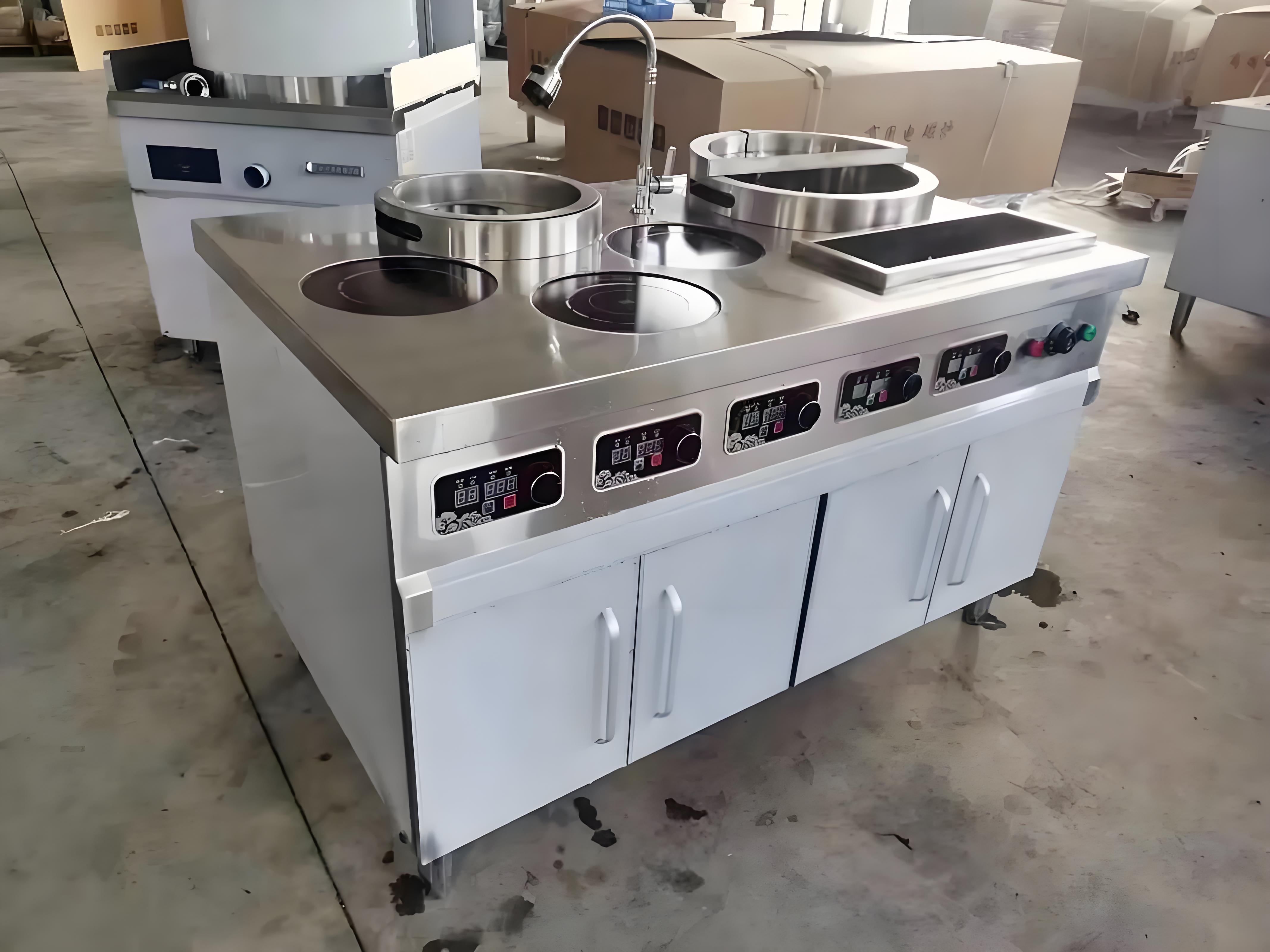When purchasing a commercial induction cooker, the first step is to find a manufacturer with research and development capabilities in electromagnetic heating. Then, compare configurations, quality, and reputation. After that comes the often-encountered negotiation phase. To negotiate effectively, you must understand the pricing factors of commercial induction cookers.
The price of a commercial induction cooker depends on the following factors: material costs (accounting for 65% of the total), research and development costs (15%), quality testing (10%), and advertising and promotion costs (10%).
If purchasing from local dealers or wholesalers, the price will typically be double the aforementioned costs, which include local rent, personnel expenses, and the dealer’s own profit margin. This is why many users eventually realize the benefit of purchasing directly from the manufacturer, as it eliminates this intermediary link and saves a significant amount of money.

The materials used in a commercial induction cooker determine its configuration.
For example, the cost difference between a domestically produced module and an imported module can be several times greater. Similarly, digital chips are several times more expensive than analog chips, and a dual-bridge solution costs twice as much as a single-bridge solution. Additionally, a 1.5mm-thick panel is significantly more expensive than a 1.2mm-thick one.
Research and development costs represent a hidden cost, but a higher proportion of R&D investment is actually more beneficial to customers.
This is because R&D determines quality and indicates whether a company is committed to the long-term development of commercial induction cookers. A manufacturer that has been focusing on commercial induction cookers for a long time will likely have a large R&D team, providing long-term assurance to users, including after-sales service and parts support even after a decade or more. Conversely, companies with little R&D investment may easily switch to other industries, leaving users without after-sales support and creating significant problems, or what is commonly referred to as a “mess.”
Quality testing is a crucial step.
Although it accounts for 10% of the cost, it can potentially save customers a significant amount of money and provide peace of mind. Quality testing is a cost incurred out of good conscience, as many manufacturers are unwilling to spend money on it, preferring to save costs and increase profits rather than consider the customer’s well-being. Electronic components inevitably have a defect rate, and without aging tests to identify these defects, customers may suffer. Therefore, if someone suggests conducting additional pre-shipment tests, it is a sign of responsibility towards you. Some manufacturers, like Jinchuxin Commercial Induction Cooker Manufacturer, conduct continuous testing for three days, which is extremely rare, while others simply power on the cooker for ten minutes before packaging and shipping.
Nowadays, the commercial induction cooker industry is plagued by a mix of quality products and shoddy imitations. Many low-quality manufacturers assemble substandard products and sell them through extensive advertising campaigns, using deceptive tactics. The more prevalent this phenomenon becomes, the higher the advertising and promotion costs will be, as many sales representatives promote products locally or through online and television advertisements, all of which incur high expenses. Ultimately, these costs are passed on to the users.





